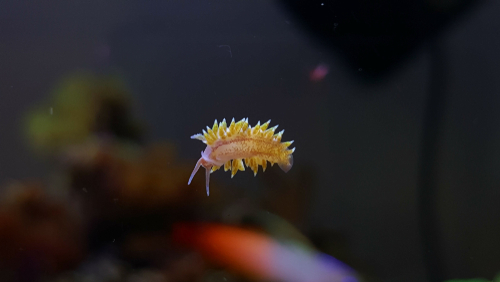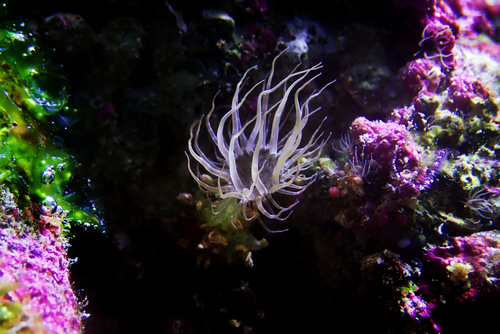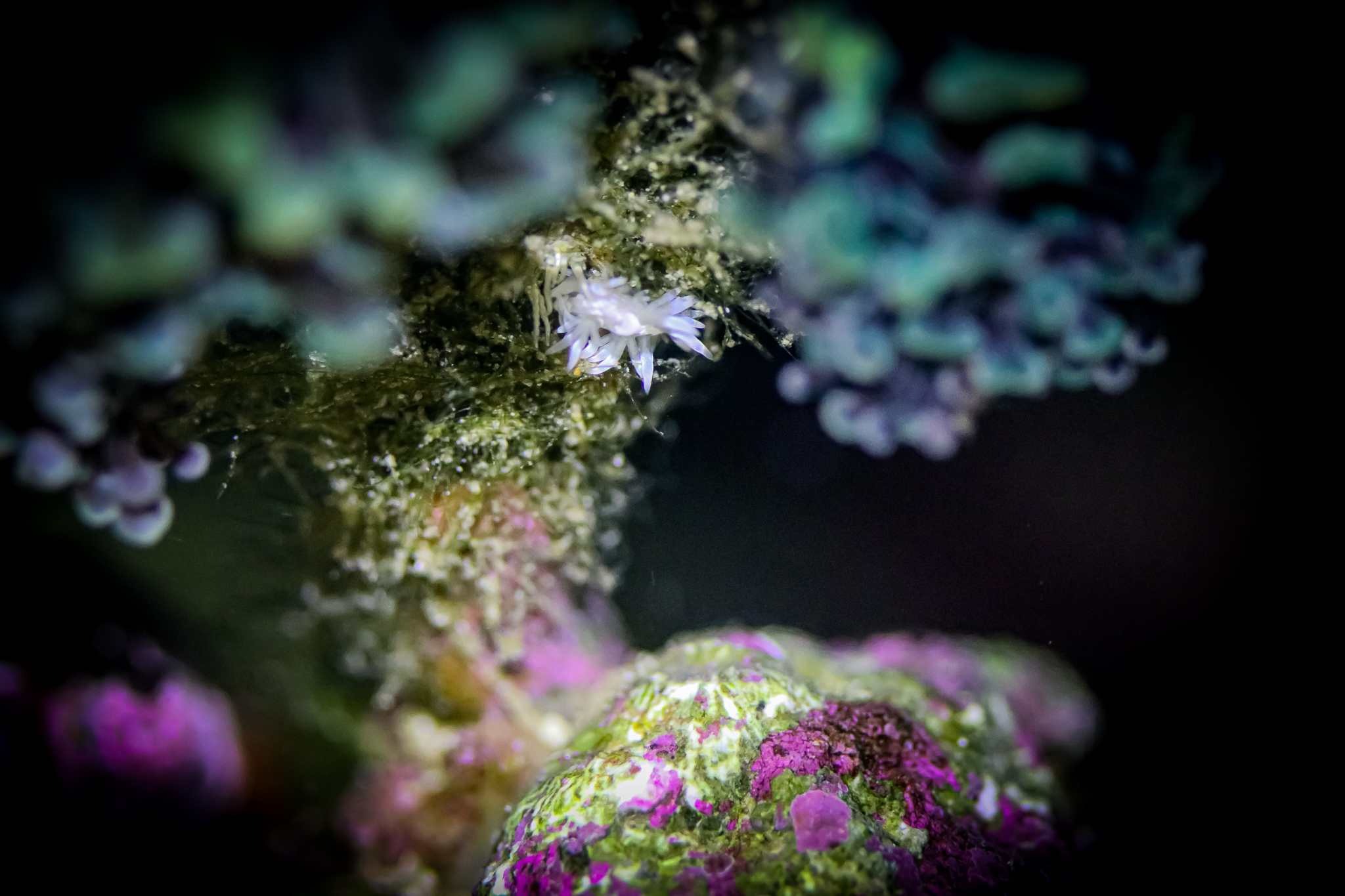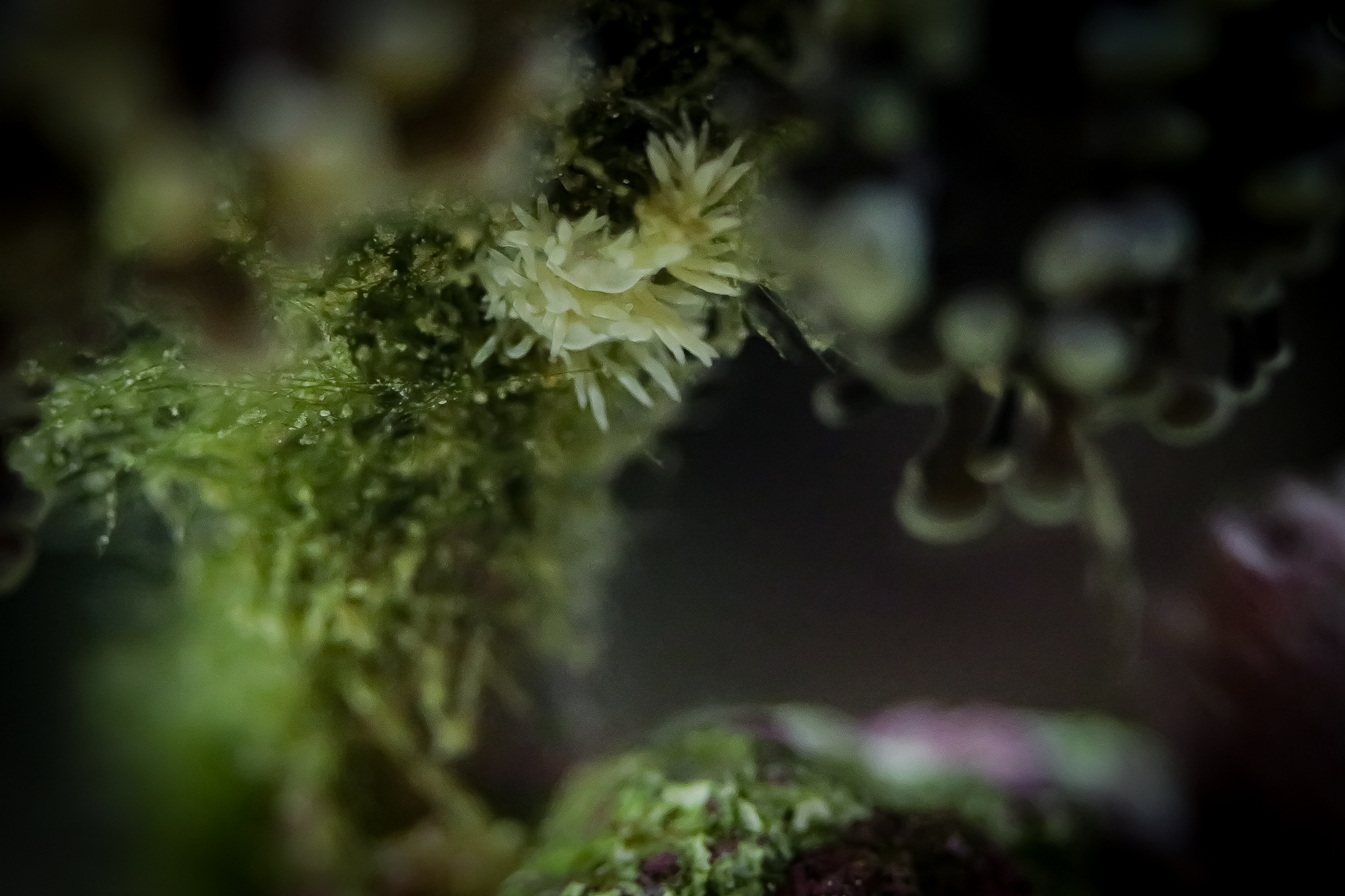Berghia Nudibranch – Berghia stephanieae
Care level – Beginner
Temperament – Peaceful
Reef safe – Yes
Water parameters – standard reef tank (PH 8.1-8.4, Nitrates <20 ppm, Nitrites 0, Salinity 32-34, Alk. 11.5, MG 1350, Cal 450, Phosphate .1 ppm
There are few things more menacing to a saltwater aquarist than an invasion of the Aiptasia Anemone. Capable of both sexual and asexual reproduction, they can quickly reach plague-like numbers. They tend to hitchhike on a frag plug, the base of coral or live rock. If you see one in your tank, you most likely already have several. These masters of survival can sting neighboring fish and coral as well as hide when sensing a threat. To complicate matters they do not need sunlight to survive, meaning they can hide in your refugium, filter sock housing, etc. While some of these pests may have a brownish tint to them, Aiptasia anemones can also be white or transparent, making them extremely difficult to see.
There are several methods of Aiptasia control including lemon juice, hot water, or chemical treatments such as Aiptasia X. Natural methods include certain Filefish, Copperband Butterfly, Peppermint Shrimp, etc. Issues may arise due to the Filefish and Copperband not necessarily eating the Aiptasia as well as their tendency to nip at corals.
Alas, nature provides the ultimate solution. The Berghia Nudibranch is a proven and effective Aiptasia predator. Their diet consists of nothing but the Aiptasia Anemone. Evolution has allowed this species of sea slug to approach the Aiptasia without being stung and without the Anemone releasing planula larva into the water column. Because the Berghia Nudibranch only eats this species of Anemone and not other pest species such as the Majano Anemone, it is recommended that they only are introduced into aquariums with moderate to severe infestations. The Berghia Nudibranch is also completely reef safe and are relatively small, thus not negatively affecting the bioload.
8-10 Berghia will suffice for every 100 gallons with a moderate to severe infestation of 50-100 Aiptasia. If you happen to see a Berghia in your tank and it’s completely white, then it hasn’t eaten in at least 14-24 hours. Berghia get their color from the pigments they ingest from Aiptasia. As long as they can find the Aiptasia, most infestations will be eliminated within a matter of months. They are also relatively easy to care for with proper aquarium maintenance and water parameters.
One of the few drawbacks to the Berghia Nudibranch is its small size. Their max size when mature is one to one and one-half inches. They have several predators that are common in the hobby such as Peppermint Shrimp, Emerald crabs, and most Wrasses. Berghia’s are also nocturnal. Chances are you won’t see them during the day although you will know they are present with the decrease in Aiptasia. They can reproduce in captivity, though most of the eggs and larva will be eaten.
Overall, the Berghia Nudibranch is the most complete solution to getting rid of Aiptasia. Easy to care for and 100% reef safe, this small but effective hunter will eradicate an entire Aiptasia population over several months.
























[…] Eradication methods include chemical additives such as Aiptasia X or a natural solution like lemon juice. Certain filefish along with the Copperband Butterfly have produced varied results. After battling Aiptasia for almost a year, I found the most effective solution to be the Berghia Nudibranch. […]